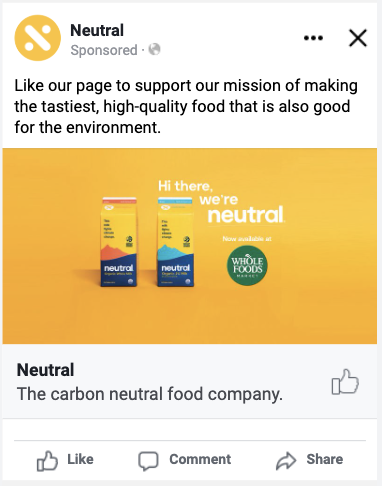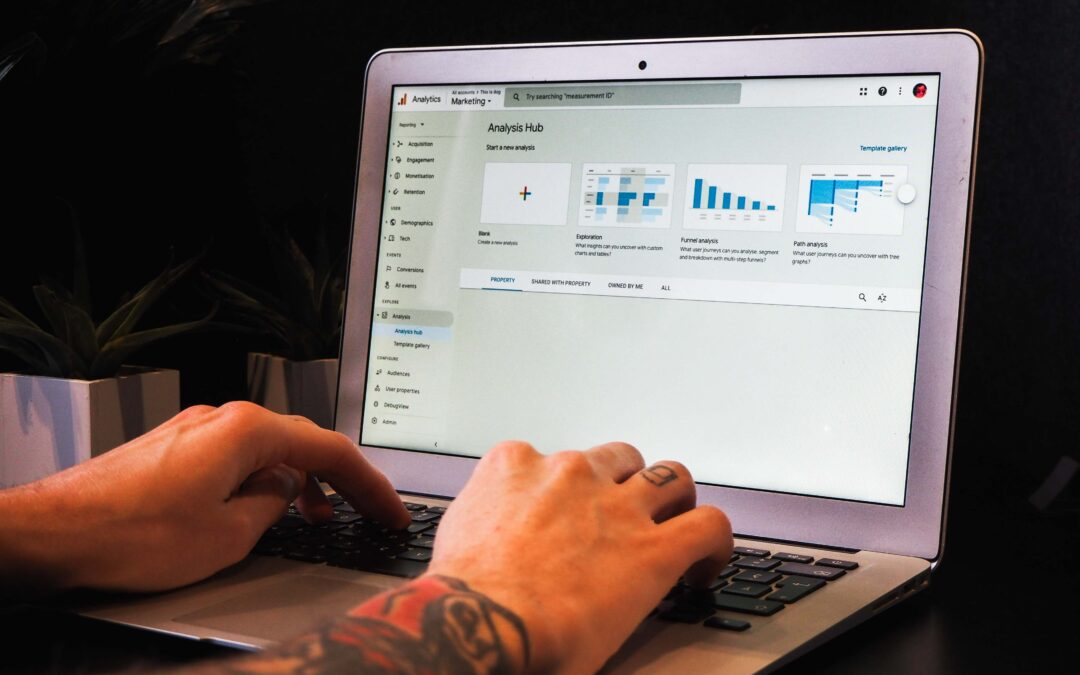
by Denae Luna | Feb 28, 2023 | Digital Marketing
Creating keyword lists for user searches that are relevant to your business can be challenging and time-consuming. Building ad creatives at scale and correctly matching them to each of your different landing pages can also be a demanding task. Did you know that Google Dynamic Search Ads can crawl through your website and create ads for you? They both generate the headlines and decide the landing pages for you.
If you’re just setting up your Google Ads strategy, check out this article here for a starter idea of how it all works: https://populationscience.com/setting-up-your-google-ads-keyword-strategy/
How Do Dynamic Google Search Ads Work?
Instead of creating an ad for each page on your site and adding keywords for each of those ads, Dynamic Search Ads uses Google’s understanding of your site to customize and target your ads.
- You specify the pages of the website, daily budget, and an ad template
- The customer enters their search term into Google search
- If you have content relevant to the search, Google dynamically generates an ad headline and destination URL to the best matching page on your site.
You only need to create the description in the template beforehand — everything else is automatic and based on the customer’s search term.
Why is SEO so important for Dynamic Search Ads?
Using Google’s web crawling technology, Dynamic Search Ads indexes your website and uses that index list to ultimately determine if a customer’s search is relevant to your business. If the search term matches the index, Dynamic Search Ads will automatically create a headline and a destination URL customized to the customer search term and will enter a dynamic search ad based on your template into the Google Ads auction.
When Google crawls the website, the headings on your site are most of what is indexed, so having those headings containing important keywords is crucial. If your headings don’t contain vital keywords for your business, Dynamic Search Ads and even organic search mechanisms for Google are going to miss out on relevant searches.
At the end of the day, automating your Google Ads through Dynamic Search using Google’s AI will be efficient and fruitful when married to a great SEO strategy. These ads deliver value for relevant searches that aren’t covered by existing keywords, complementing your keyword strategy and ensuring that you aren’t missing any relevant searches.

by Population Science | Feb 22, 2023 | Digital Marketing
If you feel like you are tired of politics, I have bad news… it’s about to be all you see and hear about on commercials and digital ads through November. According to every prediction I have seen, political ad spend will roar higher this cycle and you’ll have the hindrance of political ad bans across multiple prominent platforms.
For marketers, this presents a unique challenge as we compete for impressions across digital and traditional ad platforms. The increased spend from political advertisers will drive rates higher, eating into your return on ad spend for a large portion of 2023.
One major opportunity for brands in 2023 is testing or increasing your presence on platforms that have banned political ads altogether. Spotify recently joined Twitter in banning political ads ahead of the 2023 election cycle. Google has updated their political advertising policy to not allow microtargeting for political ads. This will likely push prices for media on Google up this year, especially in highly contested states and congressional districts. If Google is a major part of your paid media strategy, it could be even more critical to find other opportunities to reach your target audience.
Twitter may not have the reach of Facebook or Instagram, but more than 1 in 5 American adults use the service. In addition, they have made significant investments in improving their mobile and direct response ad units.
Spotify inventory may not be the traditional clickable and trackable inventory digital marketers are used to, but their audio ads are highly impactful for driving audiences into the top of your funnel. In the past year, Spotify has moved beyond music to become a player in the booming podcasting space. Both Twitter and Spotify have robust user data segments that allow advertisers to place highly targeted ads.
If you have not tried Twitter (X) or Spotify, 2023 is the perfect time to explore these platforms — especially if your audiences reside in battleground states!
by Denae Luna | Feb 10, 2023 | Digital Marketing
Building an audience on social media is a great way to grow your credibility (do you take anyone seriously that has little to know following on social media?) while opening up channels beyond email for your target audience to receive important updates. Many organizations do not invest enough time in building online communities because traditional content marketing and earned media is generally a slow grind to build a robust following.
For those of you frustrated with a slow community building process we have good news. There are affordable paid media options to help you supercharge your online community growth. In this post we will focus on two platforms with huge audiences that provide simple ad units to boost your following: Facebook and Twitter.
Facebook:
In the Meta platform you will want to select Page Like Ads. These ad units largely look the same as any other ad unit that shows up within your feed, but what makes it unique is the “thumbs up” image appears making it easy for someone to like your Facebook page.

Twitter:
On Twitter you will want to select “Followers” from the campaign objectives menu in the ads setup. Just like Facebook, these ads look like any other ad in the platform, but they have a “follow” button that makes it easy for users to follow your content.

What kind of content should you use for an effective paid like/follow ad? Remember you are playing the long game with these ads. Your objective is to build a community of long term advocates, customers, etc. The most effective ads are short and to the point. Let people know why they should care to follow you.
For example, with brands, instead of focusing on your products, focus on your mission and/or brand identity. In the example from Neutral above, they are a carbon neutral dairy company, but their mission is to provide customers with carbon neutral milk that tastes good and is also good for the environment. Our paid like/follow campaign focused on the latter and was very successful in building community, quickly.
When considering how to target here are some suggestions:
- CRM Upload: Uploading your email list can accomplish two things. First, you can negative target them. This means you tell the platform you do not want to target them with ads. This tactic will allow you to save money by not targeting people you can already reach while focusing solely on adding net new followers. Second, you can create a lookalike audience of people who are similar to those that already follow you via email. This is a great place to start.
- Interest Targeting: Meta is very good at understanding their users interests based upon their in-platform browsing behavior. What is your target audience interested in? Meta will likely have an interest-based audience for you to target.
- Handle Targeting: On Twitter you have the option to target people based upon who they follow. Do you know that your audience will likely follow a certain brand, influencer, organization, etc? Add them to your targeting list.
- Geotargeting: If your organization is localized it is vital to zero in on the area(s) you serve. This will help narrow down your target audience and achieve maximum efficiency.

by Denae Luna | Feb 10, 2023 | Digital Marketing
Finding the right platform to help measure your business success is crucial. When it comes to interacting with your website and apps, Google Analytics Reports can help you better understand your customers and how they meet your demand from start to finish.
Determine Your Business Goals as it Relates to Your Site
What do you want your customers to accomplish on your website? At this point, your site should be built to support that customer journey so that a call to action easily directs them down your ideal path to the finish line.
Some examples of these business goals are:
- Making a purchase
- Signing up for a consultation
- Calling your place of business
- Getting directions to your place of business
- Signing up for an event
Using Google Events to Measure KPIs
Google measures all interactions made with your site through events. Examples of events are:
- Clicks and pageviews on your website
- Installs and opens on your app
- User engagement and conversions on either platform
A full list of recommended events can be found here. You’ll need to talk to your website developer about including these events on your website. Once you have the events set up, it takes 24 hours for them to start measuring in Google Analytics.
Now, you will need to determine your baseline for visitors and events over a period of time. By going into Admin, then Events, you are able to set certain events as conversions, which means that they are measured in a different report in Google Analytics for you. These conversions should be important events such as add to carts, or form submits and should align directly with what business goal you are trying to measure.
Next, you can go to Engagements, then Conversions to see how your conversions have performed over a period of time. You can add other parameters to this report to see, for example, the Session Default Channel Group where the conversions originated from whether it was from a paid media source Paid Search or an organic visit to your website. Organic Search.
Do you need help determining what a good conversion rate is for your business? Or where to start with setting KPIs to benchmark against? Let’s chat! Sign up for a consultation today.

by Lisa Davis | Jan 24, 2023 | Digital Marketing
Building and executing a marketing campaign for your business can be costly and taxing on staff resources. With the right approach, you can successfully employ a low-cost strategy utilizing content generated from your consumers, known as user generated content or UGC, on a budget.
We aren’t advocating purchasing bot farms to spray your content via comment sections, or an expensive influencer to shill your product, either. Consumers value authenticity in marketing, placing a high value on testimonials and product demonstrations.
92% of marketers believe most or all of the content they create resonates as authentic, yet 51% of consumers say less than half of brands create content that resonates as authentic. Stackla
Getting your audience and customers involved in your marketing efforts and becoming brand advocates can be as simple as requesting a service review or testimonial, sharing a photo or video of customers utilizing the product via social media post with a thoughtful tag integrated across platforms. Once you get the content, it is important to know how to repurpose and use it effectively.
Reward participants by featuring their positive testimonial on your website or in your next email newsletter. Engage with the content produced by expressing gratitude or offering helpful tips on social media. Being responsive and creating a community improves platform and user engagement.
Additional rewards can be determined by hosting a Gleam contest with a discount code or gift card as a prize. After running the user generated content campaign and identifying enthusiastic supporters, you can host a brief AMA via Zoom, YouTube livestream, or Twitter Spaces, yielding more recorded content to showcase your brand or product.
Did you connect with a new professional at a networking event? Utilize LinkedIn to thank them publicly and discuss your mutual opportunities and goals. Include a photo to put a name with a face.
Learn more about user generated content strategies here. Stackla offers more insights on UGC here, too.
Check out these two easy tips for improving your digital marketing strategy here.
Are you thinking, “Great ideas, team, but I don’t have the internal capacity to manage a large scale content strategy. Now what?” We can help. Schedule your free 30-minute consultation by filling out the form below.

by Lisa Davis | Dec 15, 2022 | Digital Marketing, Programmatic
Whether you’re ready to graduate from Google Ads and Meta or you’re attracted to exciting new channels, selecting a demand side platform (DSP) partner to manage your programmatic journey is probably the most challenging process a marketing organization can undertake. No two DSPs are alike and each one boasts their own pros and cons that need to be carefully weighed. Before you start the process of researching potential DSP partners here are three items to consider:
Inventory
No DSP has access to all of the available digital ad supply out there. Ad platforms that also own and operate (O&O) web properties tend to make you buy that inventory from them directly. Examples include YouTube only being available from DV360/Google Ads and Prime Video is only available via Amazon DSP. Other platforms reach exclusive deals to manage inventory. For example, Yahoo DSP has a deal with Microsoft to manage XBOX, MSN, and other properties they own.
While there is nothing stopping you from working with multiple DSPs (if you have enough budget, more on this below), it is definitely easier to limit the number of DSPs you work with. The more platforms you add to your tech stack the more complicated it can become to manage.
We recommend that you determine what inventory is most important to you. Most DSPs specialize in being the platform of choice for specific types of inventory such as CTV, streaming audio, native, or high value O&O inventory.
Data
Data is another aspect to consider when selecting a DSP. Much like O&O inventory, major ad tech players can keep their data behind their walled garden. An example of this is the Amazon DSP. If you want to target consumers based upon the ecommerce data (or Whole Foods data) that Amazon has, you have to use their DSP to do it.
It is pretty easy to identify the handful of DSPs with unique data sets. Amazon, DV360 (Google), Yahoo, Roku, and Beeswax (Comcast) are the main players with large amounts of O&O data. Are you looking to target households with CTV? Perhaps you should look at Beeswax or Roku and their access to subscriber data. Is Google ads a major source of traffic for you right now? Perhaps it’s time to step up to DV360 to significantly increase the targeting/segmentation options there.
Budget
Knowing that Google and Amazon have unique data as well as high value O&O inventory, it is logical that many buyers want to use their DSP. Unfortunately, to work directly with either platform you need a seven-figure budget. Otherwise, you will be forced to work with one of their partners to access the DSP. These marketing partners will take a small cut of your spend, but you will still need to commit to spending six figures per year to access these platforms.
The next item to consider is whether or not you have the bandwidth to learn, setup, and manage your own DSP (self-service) or if you need the platform to manage it for you (managed service). If you do not have a very experienced media buyer on staff, managed service is probably the best option for you. There is a pretty steep learning curve to understanding DSPs, so it’s not for a beginner. That said, managed service comes at a premium cost since the platform will need to staff your account with support.
As you can see there are a lot of big decisions that go into selecting a DSP. There is no one size fits all approach to this process. If you are looking for some advice on which platform is right for you, feel free to connect with us. We are happy to help!








